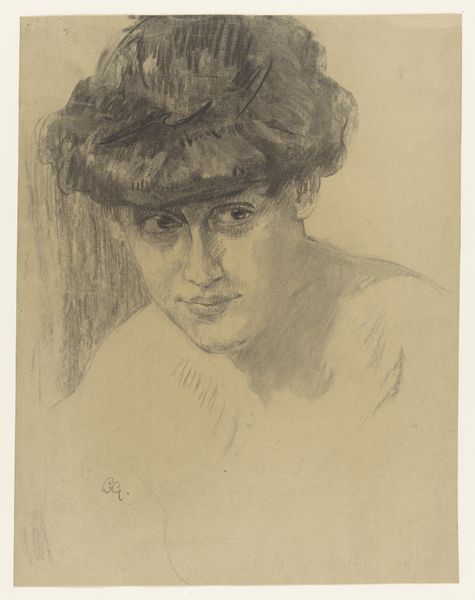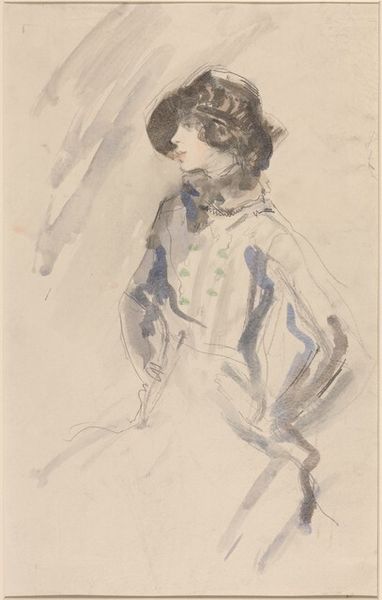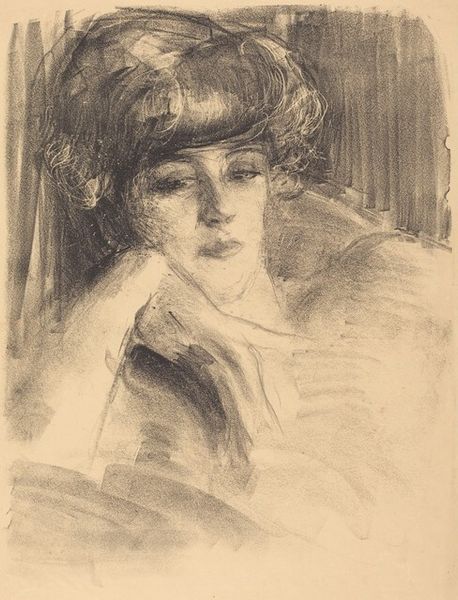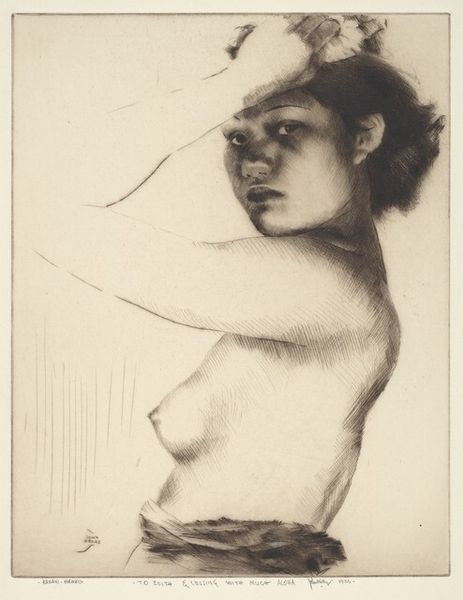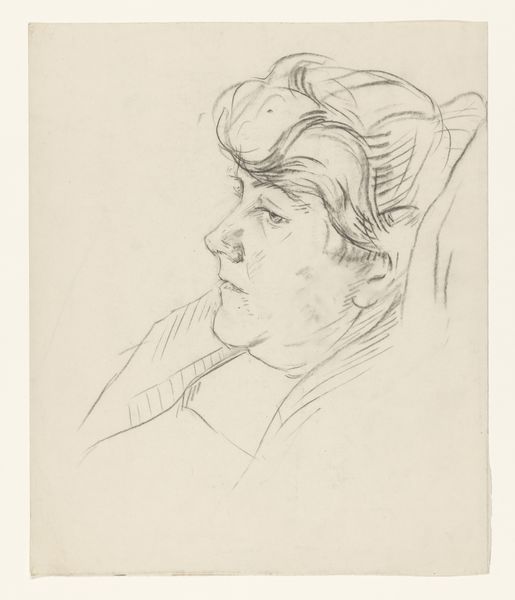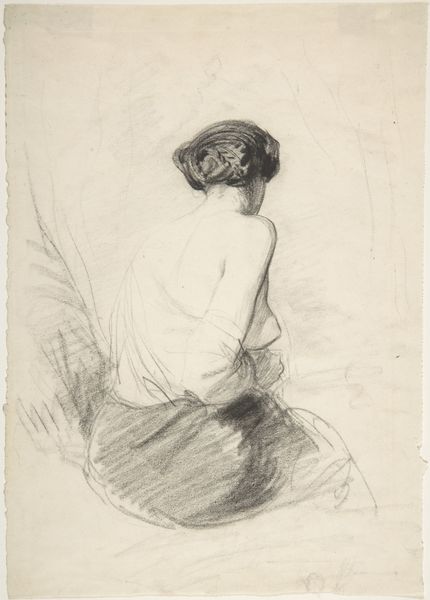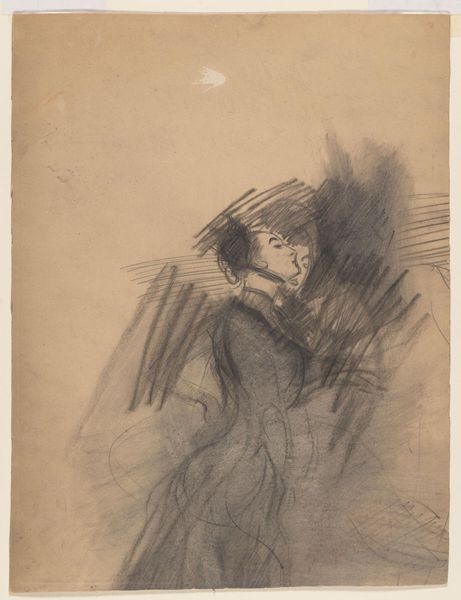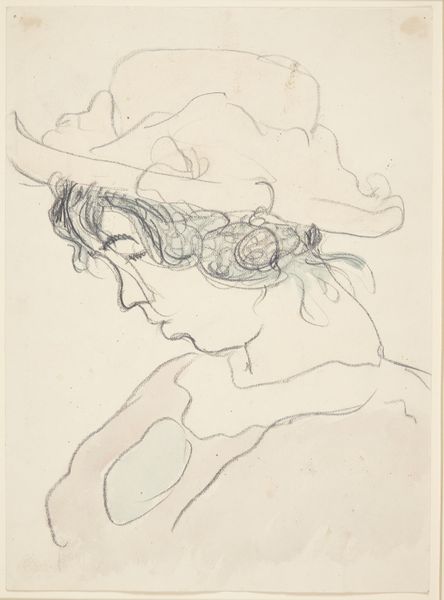
Donker meisjeskopje, naar voren neerziend, met een paars lint in het haar gewonden 1906
0:00
0:00
Dimensions: height 638 mm, width 484 mm
Copyright: Rijks Museum: Open Domain
Curator: Before us is a captivating charcoal drawing by Théophile Alexandre Steinlen, titled "Donker meisjeskopje, naar voren neerziend, met een paars lint in het haar gewonden," created around 1906. Editor: It’s arresting. There’s a vulnerability, almost sorrow, in her downturned gaze. The softness of the charcoal lends a dreamlike quality. Curator: Steinlen, a key figure in fin-de-siècle Paris, frequently depicted the lives of ordinary people. One might view this drawing as symbolic of the plight of young women in a rapidly industrializing society. Consider her class, the limitations of opportunity and potentially, the objectification they faced. Editor: I see your point, particularly given the artist’s involvement with leftist politics and his powerful posters criticizing social inequalities. But I also wonder if we impose our contemporary anxieties too heavily onto such images. Maybe it's merely a study, capturing a passing moment of introspection. The choice of the purple ribbon as a delicate accent is remarkable for that time. Is that to imply the status of the subject, the period’s view on beauty, or even power? Curator: It’s impossible to separate it from Steinlen's broader artistic practice, which often challenged prevailing social norms. It reminds us of the power of portraiture to offer glimpses into the lives and emotions of those often marginalized within official histories. It's vital to remember that turn-of-the-century Paris witnessed heightened discourse on women's rights, sexuality, and class. Editor: Perhaps, her sadness could be due to economic struggles, and potentially the lack of political or social freedom. I concede that in light of the work, it allows her silent image to advocate for that complex situation of pre-war life. It allows her vulnerability to symbolize that fight for recognition in times of inequality. Curator: Ultimately, this is a study of not only form but feeling; the subject's quiet contemplation leaves me reflecting on the immense shifts within her era. It pushes me to think of the complex issues women still deal with in today’s society. Editor: I now agree that even simple charcoal sketch invites dialogue. Steinlen truly reminds us that art doesn’t merely mirror reality. It actively engages with its social fabric.
Comments
No comments
Be the first to comment and join the conversation on the ultimate creative platform.

